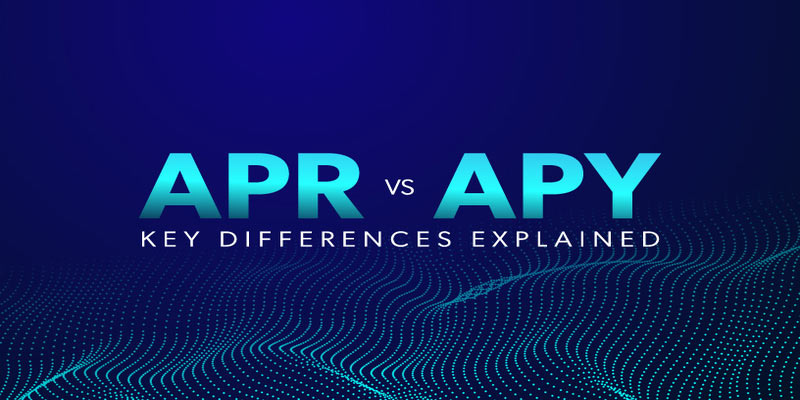For your financial well-being, it's important to be aware of the distinction between the apr vs apy. Although they share certain similarities, these two phrases are quite distinct in finance. Annual percentage rate (APR) is the interest rate paid over a year for a loan or credit card. It covers all costs, such as interest and fees, linked with the loan or credit card and represents the cost of borrowing money. While shopping around for a loan or credit card, the annual percentage rate (APR) is a helpful metric. If you're trying to decide between two credit cards, but they have different annual percentage rates (APRs), the card with the lower APR is the preferable option.
In contrast, annual percentage yield (APY) measures the rate of return over a year. The compounding effect is included, which implies that interest accrued on the initial principal is reinvested, and therefore interest is earned on interest. Annual Percentage Yield (APY) is a common metric used to assess the relative attractiveness of various investment opportunities. If you're trying to decide between two savings accounts, the one with the larger annual percentage yield is the one you should go with. Note that the APR and APY are calculated differently and provide different information. While annual percentage rates (APR) ignore the impact of compounding, annual percentage yield (APY) does. The interest earned on an investment with a higher APY may grow faster. Recognizing these distinctions will aid you in making well-informed financial decisions.
APR: Annual Percentage Rate

The interest rate charged on a loan or credit card by a financial institution is expressed as an annual percentage rate (APR). The APR is the total interest, fees, and other charges as a percentage of the loan principal. The annual percentage rate (APR) is a metric used to evaluate the relative cost of various loan and credit card options. The interest rate, any fees assessed by the creditor or lender, and the loan length are all factors in determining the annual percentage rate. There is no compounding, so any interest collected on the loan will not add to the interest already earned. If you carry a $1,000 credit card with an annual percentage rate (APR) of 18% and don't make any payments, you'll be charged $180 in interest.
APY: Annual Percentage Yield
The rate of return on an investment expressed as a percentage each year that considers compounding is known as the Annual Percentage Yield (APY). In calculating APY, interest on the principal and interest on the interest is factored in. Annual Percentage Yield (APY) is a metric used to evaluate the profitability of various savings and deposit products (CDs). The annual percentage yield (APY) is calculated by adding together the interest rate, the number of times the interest is compounded per year, and the annual cost of the investment. The APY increases as the frequency of interest compounding increases. A savings account that pays interest at a rate of 2% per year, compounded monthly, would yield a total of $20 in the first year if you deposited $1,000. However, if the interest is compounded daily, you'll have a little more than $20 in your account.
APR/APY Differences

The primary distinction between annual percentage rate (APR) and annual percentage yield (APY) is how it is computed and what data it includes. While annual percentage rates (APR) ignore the impact of compounding, annual percentage yield (APY) does. Thus, the annual percentage rate (APR) more accurately represents the cost of borrowing. In contrast, the annual percentage yield (APY) more accurately represents the rate of return on an investment or savings account. To add further nuance, lenders and credit card issuers levy fees and other expenses that are factored into the APR calculation, making it often greater than the APY. However, annual percentage yield (APY) considers compounding, which may be larger than the interest rate advertised.
Conclusion
Finally, annual percentage rate (APR) and annual percentage yield (APY) are also significant financial words that indicate the cost of borrowing as well as the rate of return for an investment, respectively. Despite their apparent similarities, they are calculated differently and reveal unique information. When comparing the interest rates of various lenders or credit card issuers, APR is utilized, while APY is used to evaluate the yield on various assets. Individuals can make better-informed decisions that align with their interests and aspirations if they have a firm grasp on these distinctions and consider them when weighing their financial options.




